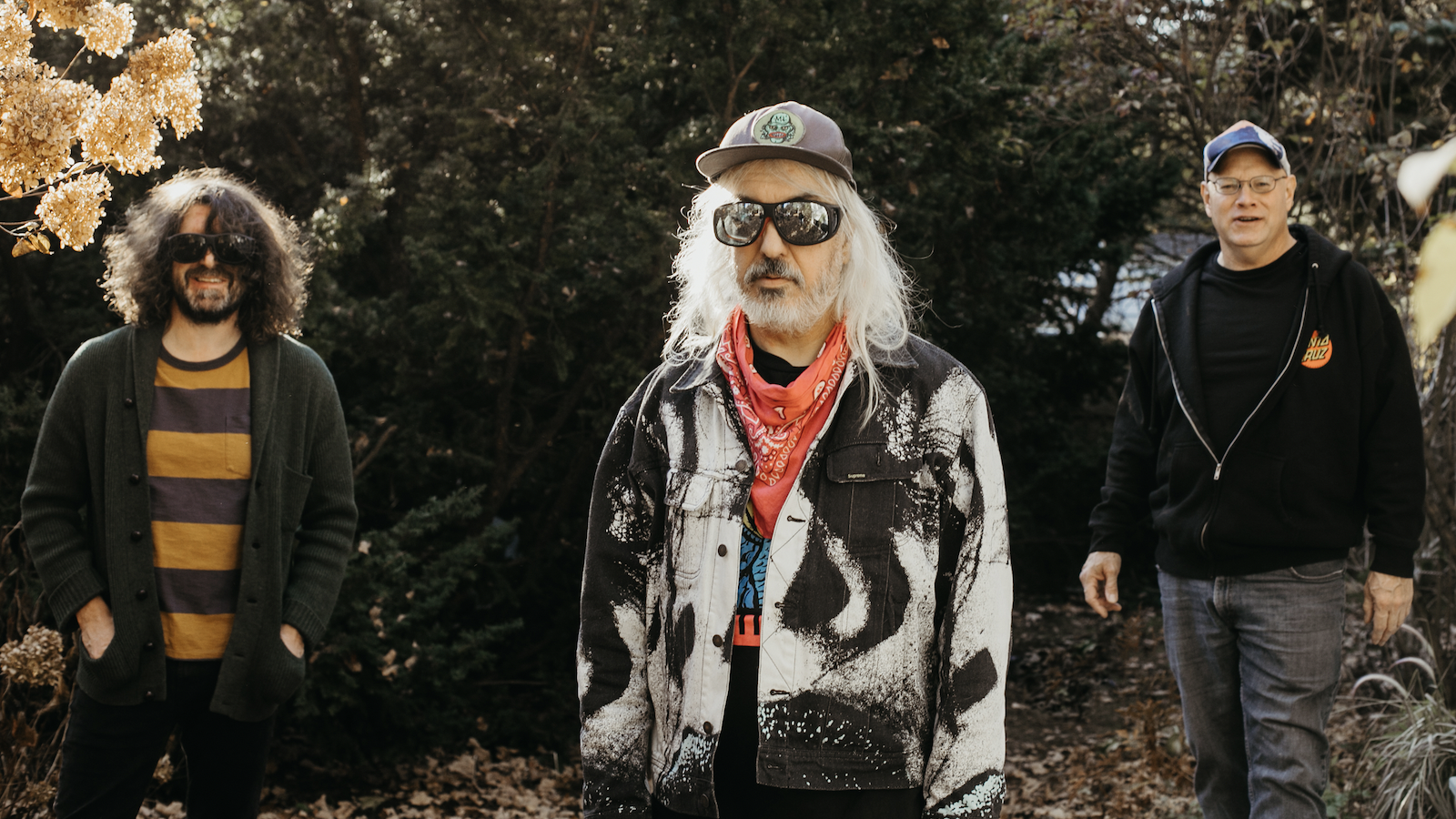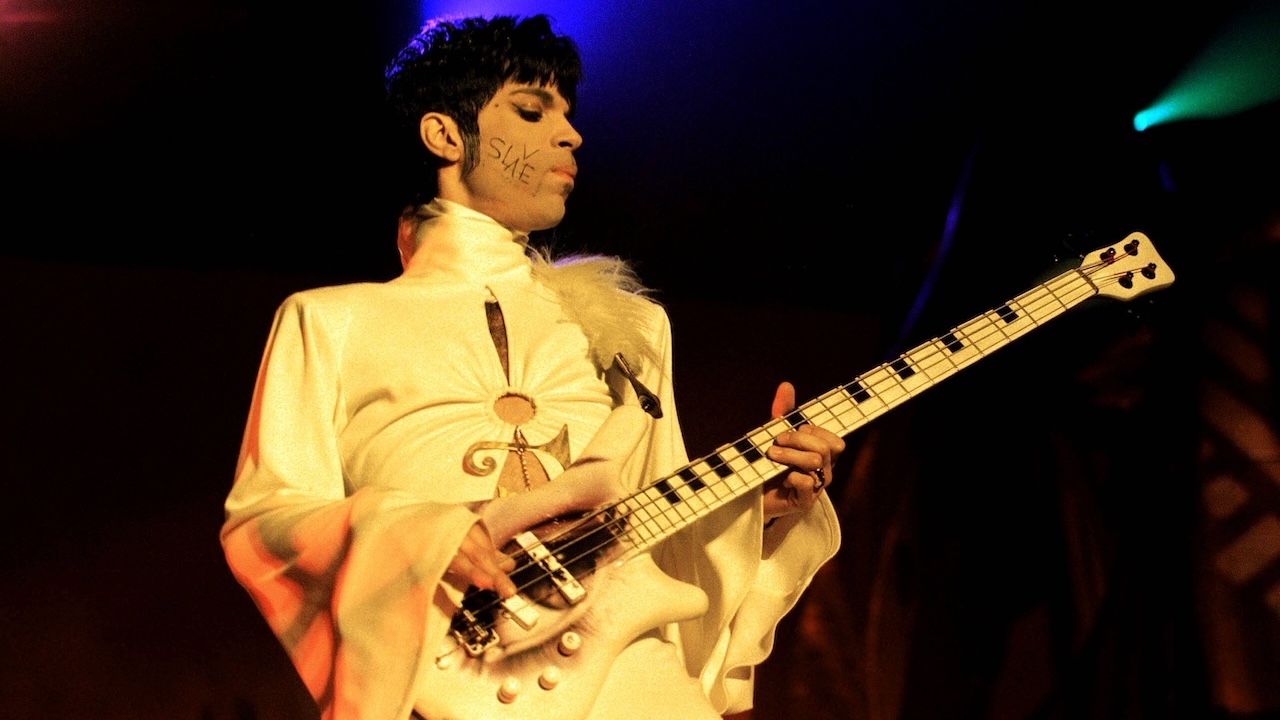Dinosaur Jr.’s J Mascis on being inspired by Thin Lizzy and working with Kurt Vile
Never ones to rest on their laurels, the legendary Dinosaur Jr. shake things up with meteoric might on their first album in five years

For any band 12 albums deep, there’s a level of normality to be expected – you’re not hovering over the play button thinking, “Okay, this is gonna be the one that really makes a stink!” This much is especially true for any band packing out theatres and shifting thousands of discs on the regular; if they stuck gold on a certain sound or formula, you can bet a hot dollar they’ll be riding it right to the grave.
Every so often, of course, there’ll be one band eager to buck the trend. They may not completely shed their stylistic skin, but they’ll stir the pot just enough to keep longstanding fans hooked in and pique the interests of potential newcomers. In the case of genre-defining ‘90s icons Dinosaur Jr, that meant dosing up their epochal alt-rock palate with duelling lead guitars inspired by Thin Lizzy, some fresh perspective from new-age indie stalwart Kurt Vile, and a touch of empiricism brought on by J Mascis’ need to finish album #12 in isolation.
The end result is Sweep It Into Space: a defiantly melodic, emphatically energised beast of twisting grooves, pummelling riffs and hearty, heavy-hitting hooks. Australian Guitar caught up with Mascis to learn more about how Dinosaur Jr. bellied up their latest declaration of alternative dominance.
How does Sweep It Into Space add to the last 37 years of Dinosaur Jr’s creative output?
I don’t know… It’s just another album, y’know? We just wanted another set of songs to tour on. I guess having Kurt Vile around lightened the mood a little bit around the studio. Y’know, we’re just always trying to make the best record we can make at any given time.
What was the musical chemistry like between yourselves and Kurt?
I think it made Lou [Barlow, bass] and Murph [drums] feel a little more at ease, y’know, to keep slogging along, trying to learn the songs. He just made the mood a little bit lighter than usual.
Did you guys throw many ideas back and forth?
Nah. He would just listen to us play, and if he heard something he wanted to sing or play on his guitar, he’d try it – and then if I liked it I’d leave it in, and if not I’d delete it. But I liked a lot of the stuff he came up with.
My understanding is that when the pandemic hit, you were in the tail end of the recording, but you still had a little bit left to go, so you ended up doing everything yourself. What can you tell us about that last chunk of the process?
Yeah, it was strange. Y’know, I’m not great at engineering, so I had to learn few things. And I had to play some keyboards, which was a little hard. I think Kurt was going to come back at some stage, too, so who knows if he would’ve added some more stuff. I didn’t mix it at home, but that wasn’t too bad because we used the same guy that mixed the last few records [John Agnello] so it wasn’t too hard of a transition. But yeah, it was just strange more than anything.
Get The Pick Newsletter
All the latest guitar news, interviews, lessons, reviews, deals and more, direct to your inbox!
I was watching the Fender Play interview where you stressed the importance of always learning new things to do with the guitar, no matter how long you’ve been at it. How did that apply to your approach to the guitar on this record?
Y’know, whatever I’d learned over the last few years, I tried to apply to this record. There were a different tunings… I like to play a lot of different guitars, because they always have a unique sound. Y’know, maybe most people can’t hear any difference, but I feel that different guitars inspire me to play different things and in different ways.
What were some of those new tunings you wanted to explore?
The first song [“I Ain’t”] has got a G tuning, like the Stones used a lot. I did have another song on the last album in a G tuning, and thought, “Oh, here’s another song I can play on the same guitar during a show.” I don’t go too crazy with tunings, but it definitely makes you play differently, not knowing exactly where to put your fingers.
I read that as far as the guitar sound on this record goes, you were inspired a lot by Thin Lizzy and their duelling twin-lead sound. What was it like for you to tap into a little bit of that?
Y’know, that’s another thing – it’s probably not that evident, but that’s just what I was into at that moment, so I’d slip a few little things in. But I don’t know if you’d really notice anything if you didn’t already know about it. There’s a little bit of harmony guitar in “I Ran Away”, but it’s really nothing like what Thin Lizzy sounds like. But y’know, every album I’m usually into some different thing that I’m into more than other things.
What was your guitarsenal like for this record?
Well speaking of Thin Lizzy, I got a ’72 Les Paul Deluxe, and I used that on the rhythm part for [“I Ain’t”]. I had this St. Vincent guitar that Ernie Ball gave me, too, and I found that really useful. A lot of the time, I’ll play songs with a capo on the ninth fret, and a lot of my old guitars can’t really stay in tune with a capo that far up on the fretboard. But the Ernie Ball guitar is somehow set up so that it will, so I’d use that guitar for the parts where I needed that advantage.
What is it about that ’72 Les Paul Deluxe that makes it such a gem?
I’d never really thought about them really until I was watching those Thin Lizzy videos, and I heard that when Scott Gorham came to England and joined the band, he had such a shitty guitar that they had to go out and buy him a new one. He and Brian Robertson bought these brand new Les Paul Deluxes, and you can see them in a lot of the early videos – I know they played it on Jailbreak. And yeah, it’s not a guitar you see that many people play these days. It was around a lot when I was a kid, though. The mini humbuckers have a really unique sound that I like a lot.
Do you use many of your signature Jazzmasters in the studio?
I don’t all that much, but Lou has been playing them for his songs lately. I don’t tend to use Jazzmasters much in the recording – I guess it’s more like my live guitar now.
Why do you prefer to play those live, but others in the studio?
I tend to like to play this ’58 Tele for leads, ever since I got it right before we did Where You Been in the ‘90s – that’s been my favourite guitar to play leads on for the longest time. And I usually like to play a Les Paul Junior for rhythm. That’s kind of my basic sound for recording, and then other guitars come and go. But the Jazzmaster… I don’t know. I mean, I learned how to play on it, so that’s what I tend to play live because I’m used to it.
Has the idea of a signature Tele ever come up?
Yeah, they actually copied my Tele for a new model that’s supposed to come out in August. [Editor’s note: unfortunately we can’t share any more details about this just yet. Keep your eyes peeled, though!]

Ellie Robinson is an Australian writer, editor and dog enthusiast with a keen ear for pop-rock and a keen tongue for actual Pop Rocks. Her bylines include music rag staples like NME, BLUNT, Mixdown and, of course, Australian Guitar (where she also serves as Editor-at-Large), but also less expected fare like TV Soap and Snowboarding Australia. Her go-to guitar is a Fender Player Tele, which, controversially, she only picked up after she'd joined the team at Australian Guitar. Before then, Ellie was a keyboardist – thankfully, the AG crew helped her see the light…
“Tom would say, ‘Play your guitar with a car key.’ It was very experimental”: Little Feat's Fred Tackett recalls Tom Waits' left-field approach to guitar playing – and his one-of-a-kind studio sessions
“Seeing friends and heroes of mine having their solos plagiarized broke my heart”: Giacomo Turra used their solos note-for-note for his own viral content. Now the guitarists who had their playing “stolen” are speaking out











